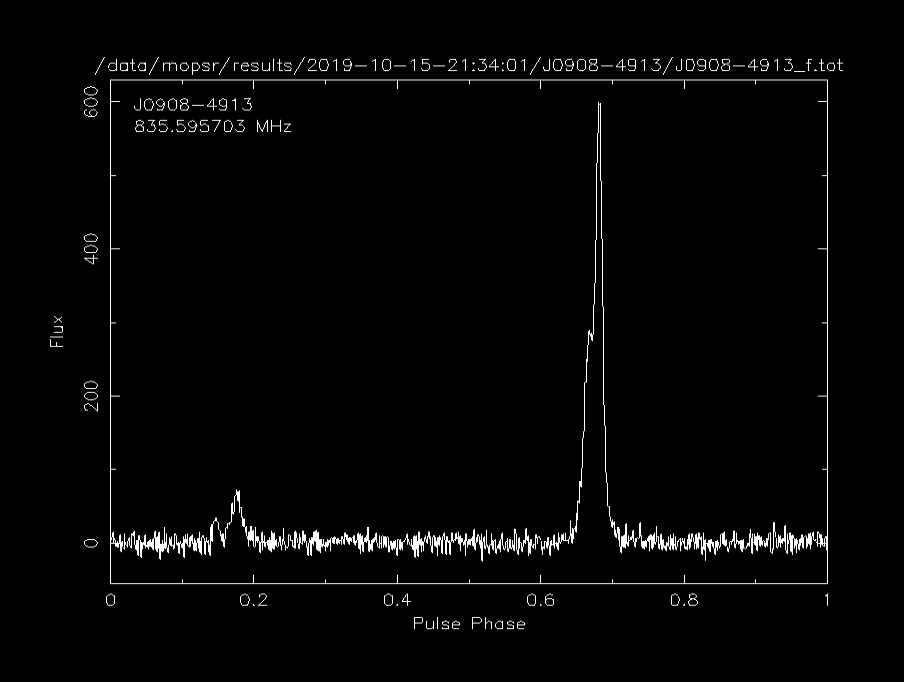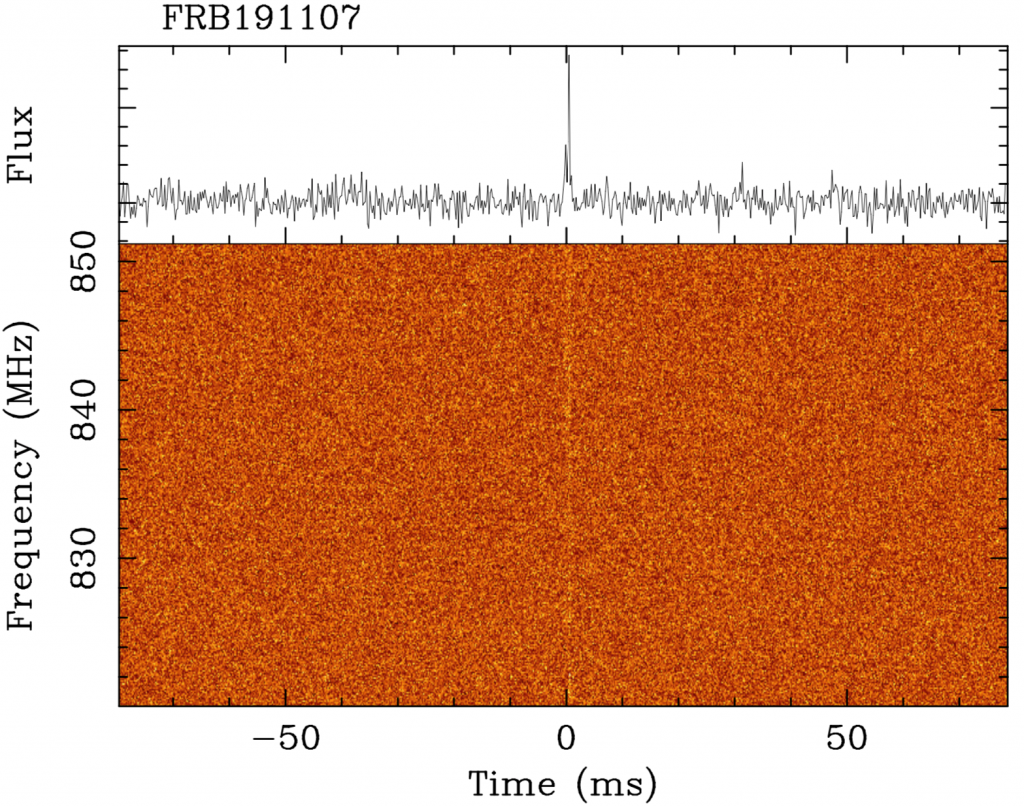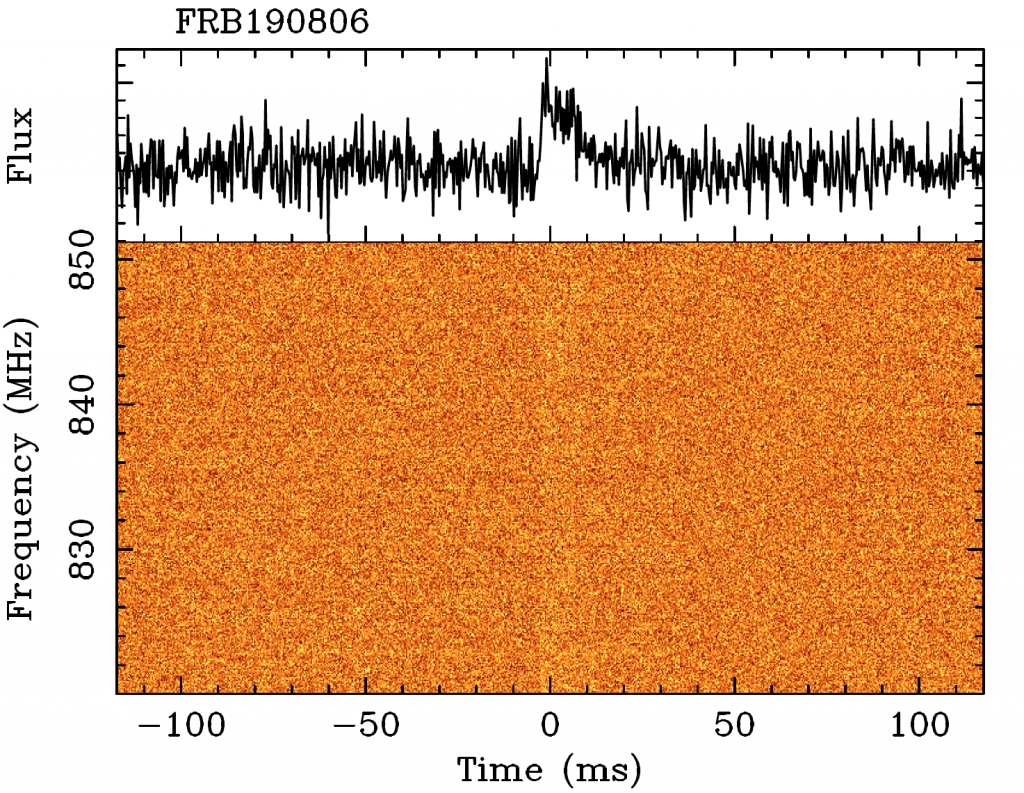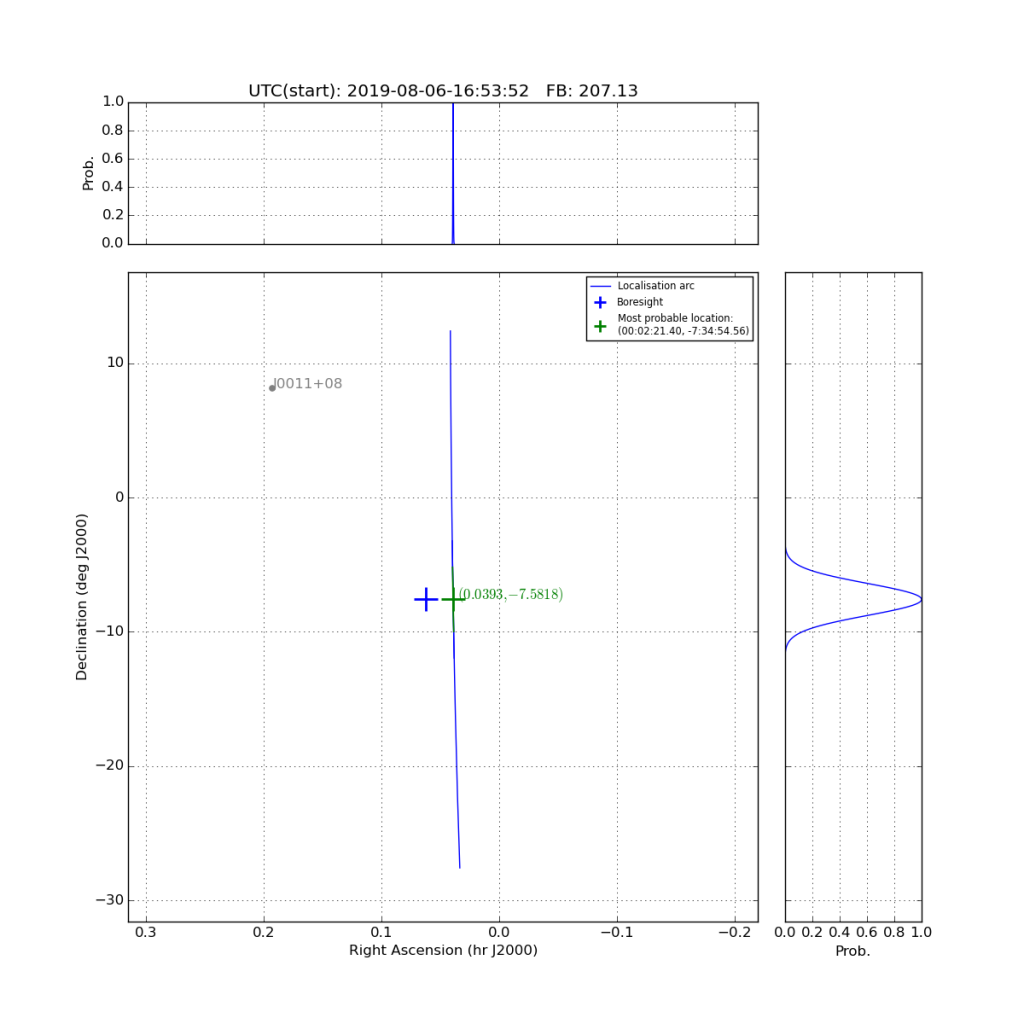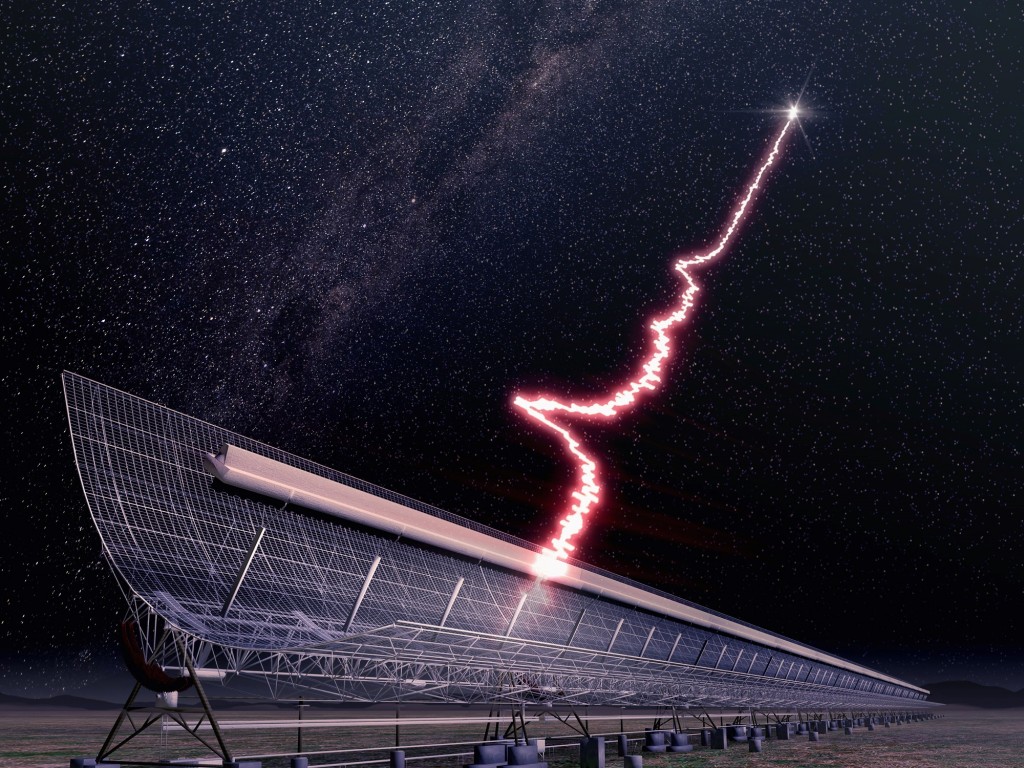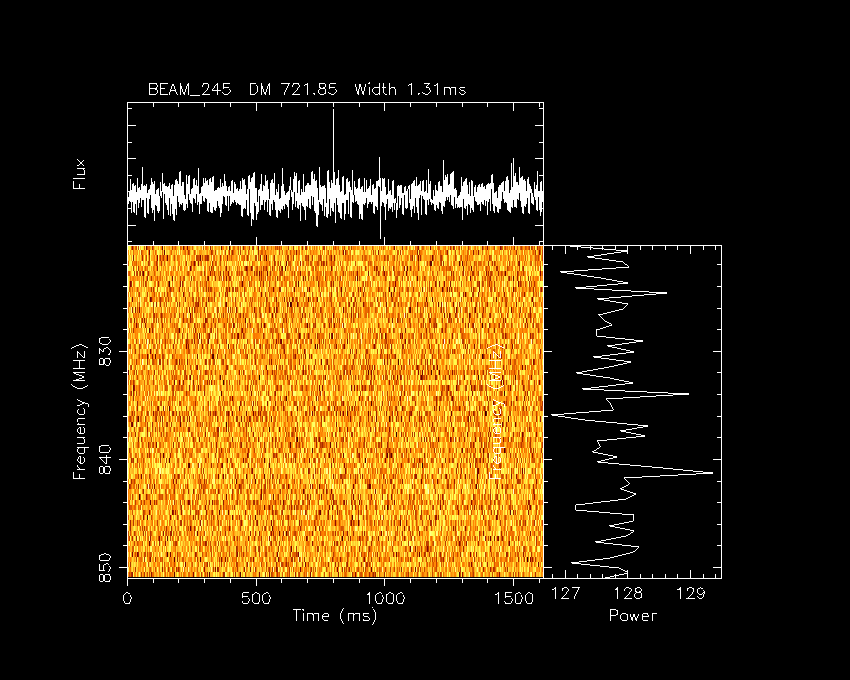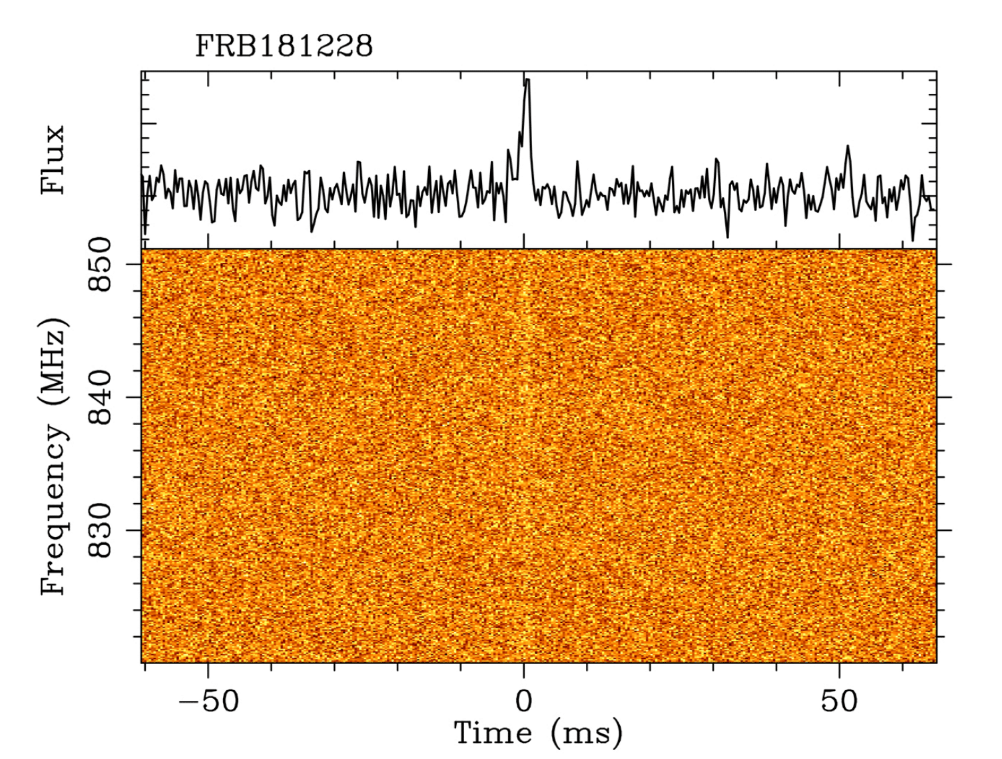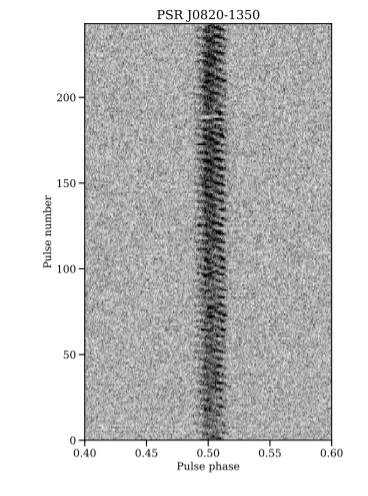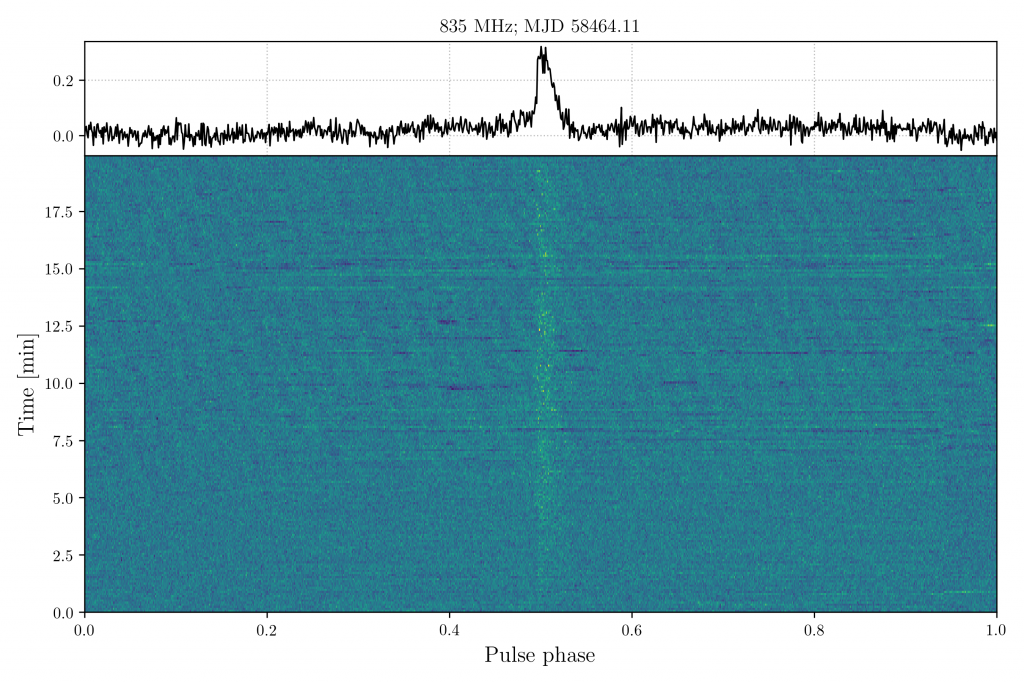SMIRF is the “Survey for Magnetars, Intermittent pulsars, RRATs and FRBs” running at the Molonglo Radio Telescope.
Led by Swinburne PhD student (now a postdoctoral fellow at the MPIfR in Bonn), Vivek Venkatraman Krishnan, the survey has set new records in real-time searches for transient phenomena in the radio region of spectrum.
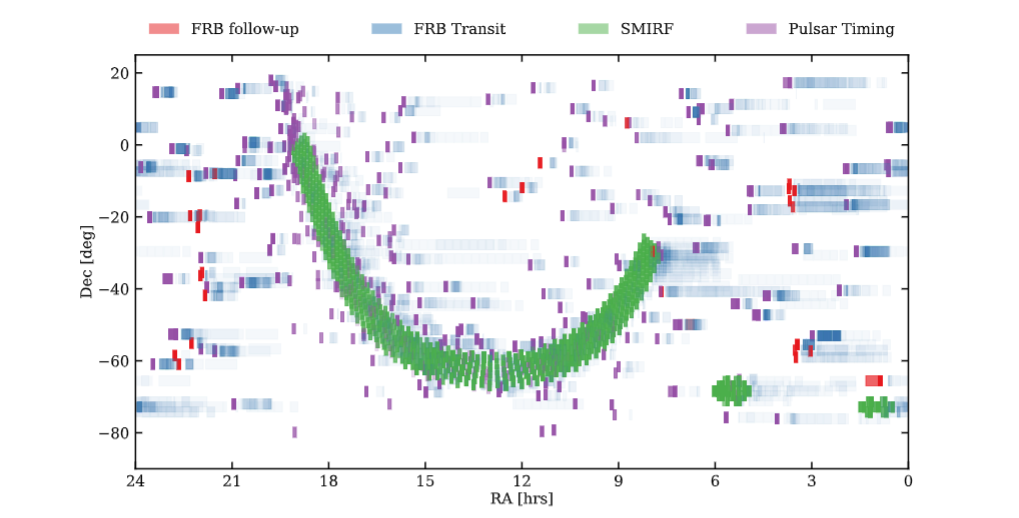 The regions of the southern sky surveyed by SMIRF, showing pulsar timing, search regions for new pulsars and intermittant pulsars, for new Fast Radio Bursts (FRBs) — and following up known FRBs.
The regions of the southern sky surveyed by SMIRF, showing pulsar timing, search regions for new pulsars and intermittant pulsars, for new Fast Radio Bursts (FRBs) — and following up known FRBs.
SMIRF makes use of the huge field of view of the Molonglo telescope to search large swathes of sky, while also using the high spatial resolution of the 1.6 km long telescope array to detect transient sources within the surveyed regions. Seaches for transient phenomena at radio wavelengths have rarely used arrayed telescopes in this manner before, but rather made use of very sensitive single dish telescopes with relatively tiny fields-of-view.
SMIRF has the capacity to survey the entire Southern arc of the Milky Way for variable and transient radio sources every 10 days. Typically, surveys making such a large area sweep across the sky are only undertaken once in a decade. SMIRF has the capacity to undertake such surveys many times per year. As part of his PhD thesis, Vivek also implemented into SMIRF fully autonomous operation of the telescope, so that it decides which regions of sky to survey under robotic control.
Regularly and frequently surveying the sky is the key to discovering and understanding intermittancy in pulsars. Over the 5 decades since the discovery of pulsars, several thousand have been isolated and characterised in search programs at radio telescopes around the world. In the last decade or so, about 50 of these have been identified as highly variable — disappearing for months at a time and only occasionally being “on” — or giving off occasional and quite sporadic single pulses of radio energy as they only indicator of their presence.
The small numbers of such pulsar related sources is most likely a consequence of the difficulty in finding them, rather than small numbers per se. Regular and frequent scanning of the Milky Way galaxy is the key to finding many more of them, characterising their properties, and working out their relationship to the much better studied pulsars.
This is where the SMIRF program excels. PhD student Vivek Venkatraman Krishnan implemented the processing engine that runs on the telescope’s high-performance computing cluster on 56 Graphics Processing Units (GPUs). Processing 22 gigabytes of data per second, it can use the stream of digitized radio data to make timing measurements of the known pulsars in the field of view, search for new pulsars using Fast Fourier Transform techniques, while also operating commensally with the faccility’s Fast Radio Burst discovery program. It represents the state-of-the-art in such techniques, and presages the capacity required to make such searches with coming large scale facilities such as the SKA (Aquare Kilometer Array), which will use similar techniques.
The survey has found a new intermittant pulsar, seen in the plots below (showing the phase of the pulsar versus time, and the phase versus frequency):

Two examples of single pulses produced by the newly found intermittant pulsar found are shown below:
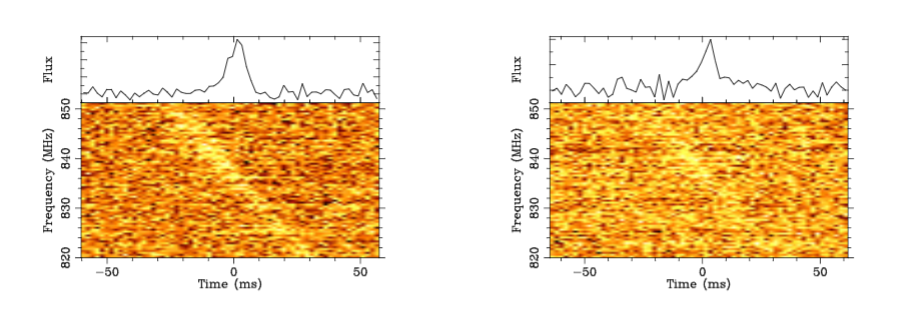
Around a dozen pulses from the new source were detected over the course of 20 minutes, leading to good characterization of the source properties as an intermittant pulsar.
The first SMIRF paper, which gives a full system description overview and initial results, has been submitted to the Monthly Notices of the Royal Astronomical Society, and is available as a preprint.
